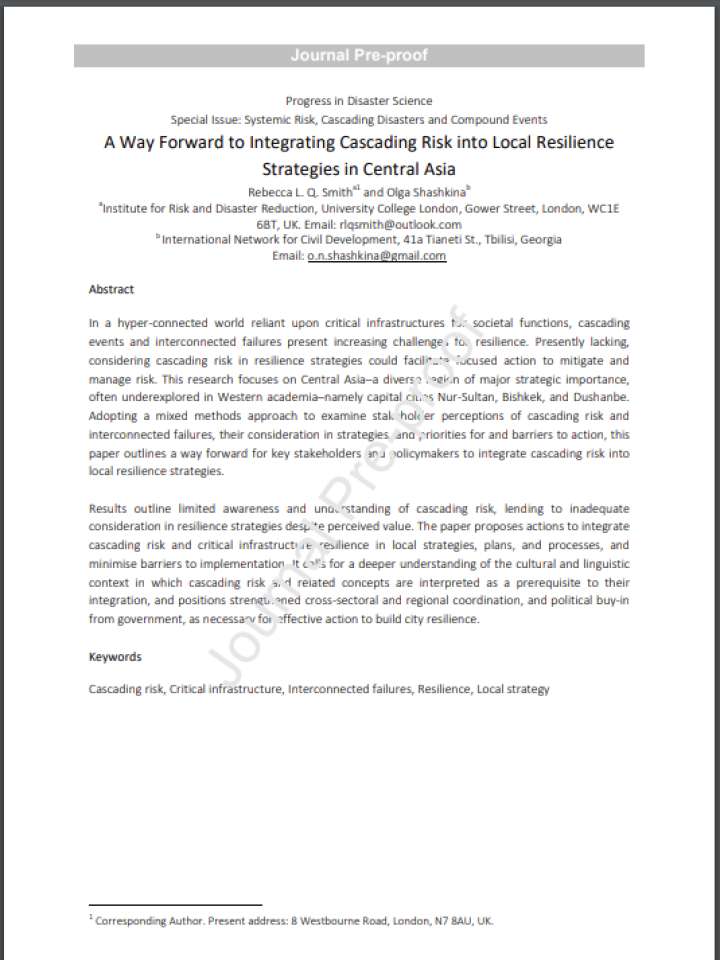A way forward to integrating cascading risk into local resilience strategies in Central Asia
This research focuses on Central Asia–a diverse region of major strategic importance, often underexplored in Western academia–namely capital cities Nur-Sultan, Bishkek, and Dushanbe. Adopting a mixed methods approach to examine stakeholder perceptions of cascading risk and interconnected failures, their consideration in strategies, and priorities for and barriers to action, this paper outlines a way forward for key stakeholders and policymakers to integrate cascading risk into local resilience strategies.
The way forward proposed gaining a deeper understanding of the social, cultural, and linguistic context in which cascading risk and related concepts are interpreted as a precondition to their integration in strategies for resilience at all levels. In gaining this understanding, the importance of differentiating between concepts such as complex and cascading risks in developing actions for resilience will also be better understood, facilitating the development of more comprehensive and locally relevant action plans. Truly transforming theory into practice will require strengthened cross-sectoral and regional coordination for resilience.
Explore further
